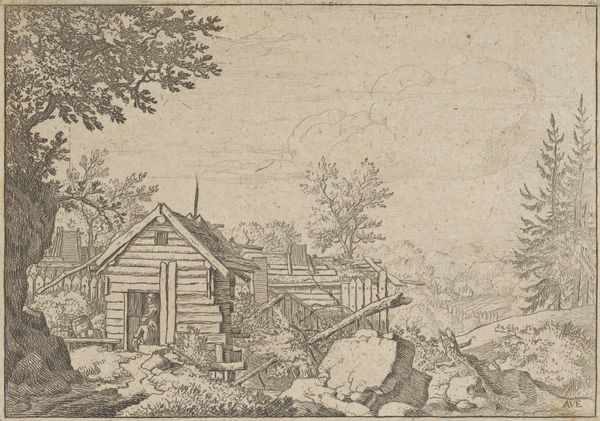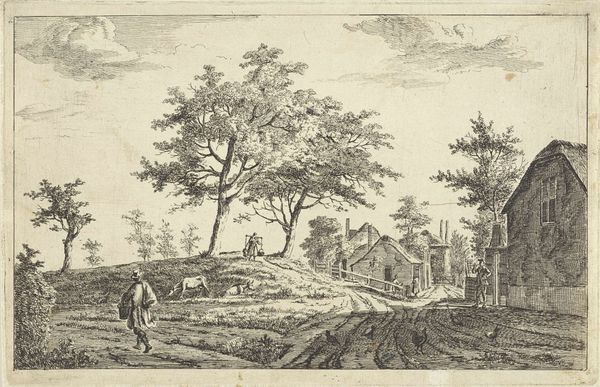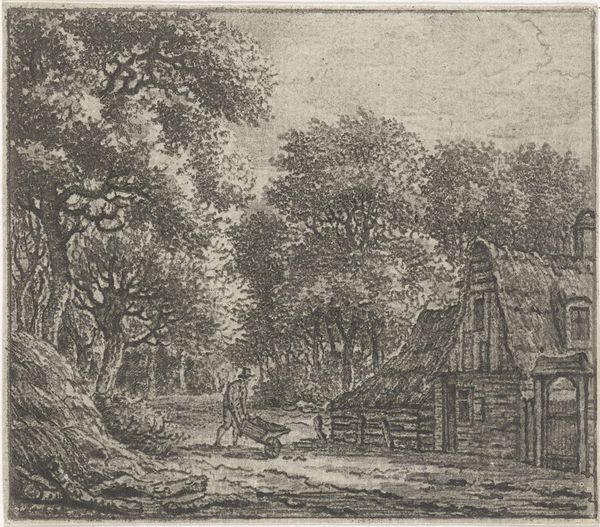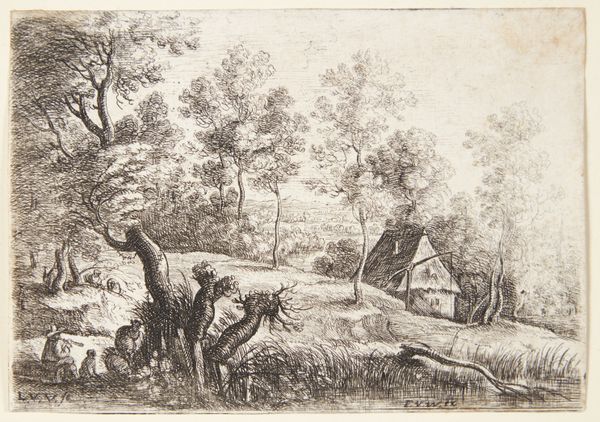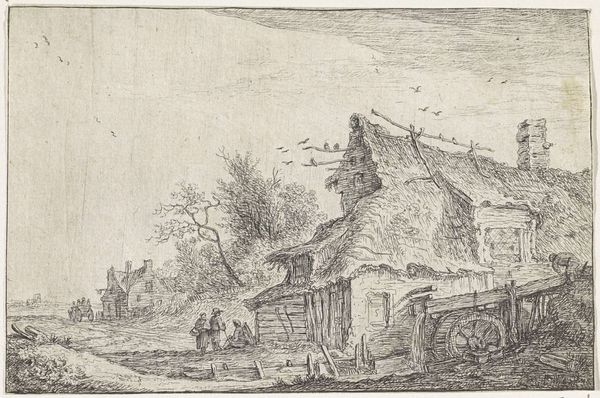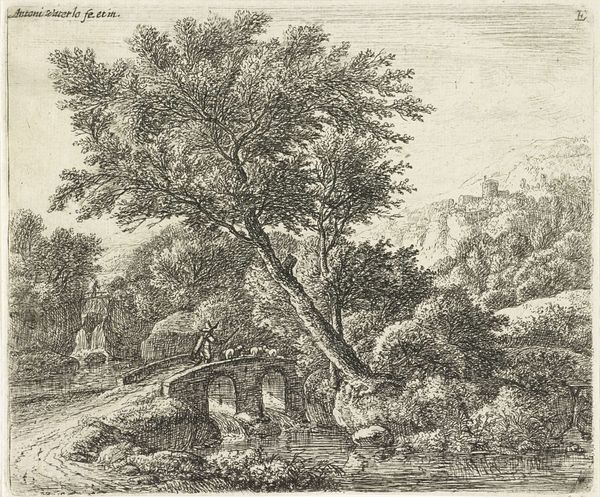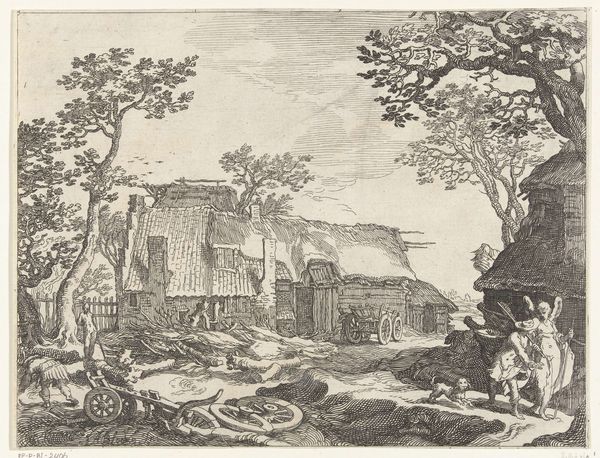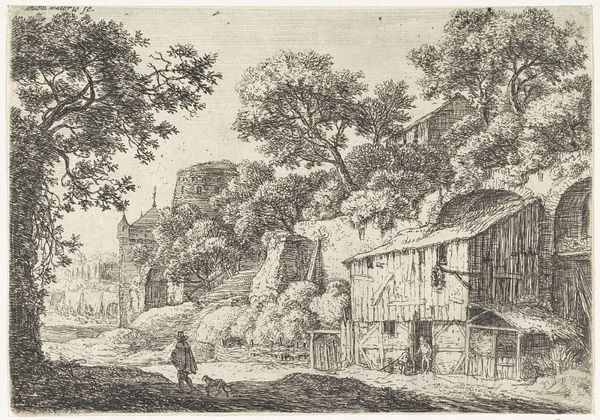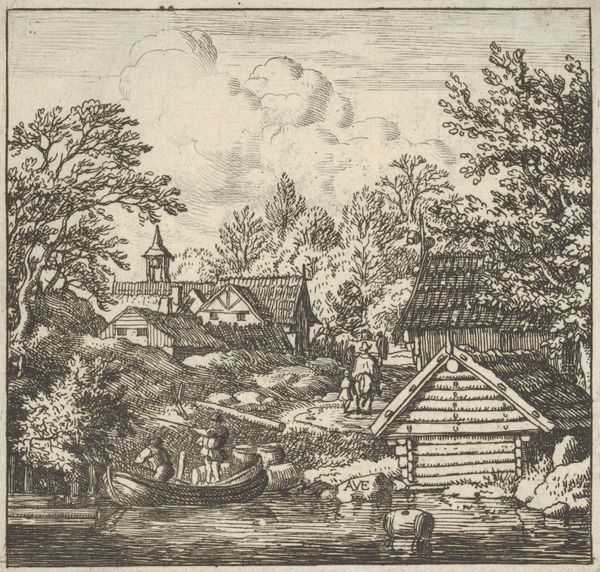
The Hamlet on the Montainous Ground 1621 - 1675
0:00
0:00
drawing, print, etching, engraving
#
drawing
#
dutch-golden-age
# print
#
etching
#
landscape
#
figuration
#
line
#
engraving
Dimensions: Sheet: 4 1/8 × 4 3/16 in. (10.4 × 10.7 cm)
Copyright: Public Domain
Editor: Here we have Allart van Everdingen's "The Hamlet on the Montainous Ground," made sometime between 1621 and 1675. It's an etching, giving it a lovely, detailed line quality. It feels quite rural and rustic. How do you interpret this work? Curator: This landscape presents an idealized version of rural life, but let's not romanticize it. Consider the broader social context. During the Dutch Golden Age, we see a rise in depictions of everyday life, but this was also a period of significant colonial expansion and economic disparity. Who exactly is benefiting from this 'pastoral' scene? Who is absent? Editor: That’s a great point! I hadn’t really thought about the absences. It does seem to ignore the tougher realities. Are you suggesting that these idyllic landscapes, in a way, mask the less appealing realities of the time? Curator: Exactly. While the focus is on this charming village, what about the exploitation of resources or the impact on indigenous populations abroad, which fuelled the wealth of the Dutch Republic? The 'picturesque' becomes a way of deflecting from uncomfortable truths. And even within the village itself, consider questions of land ownership, labor, and social hierarchy. Who had the ability to enjoy this landscape and who was forced to extract resources from it. Editor: So, you are saying that looking closely at the beauty on the surface makes me question the power dynamics inherent to the creation and consumption of art. What can I look for when engaging with historical artwork that will prompt me to explore context more? Curator: Look for the untold stories, the absences. Question what’s being presented and why. And consider whose perspectives are amplified and whose are silenced. Every work of art exists within a complex web of social, economic, and political relationships. Editor: That gives me a lot to consider when looking at art. Thanks for sharing your insights, I definitely learned a lot today!
Comments
No comments
Be the first to comment and join the conversation on the ultimate creative platform.

